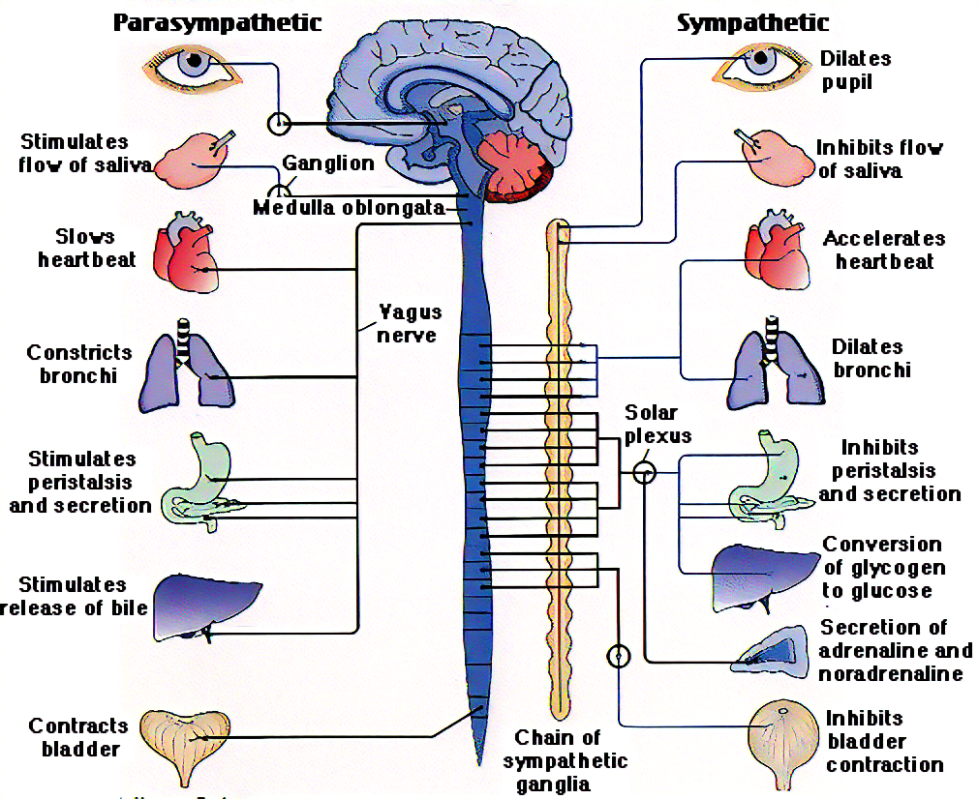Whether you are someone who needs evidence to trust your therapeutic journey, or you are simply curious, it is relevant to understand how mental health is physiological and biological. Trauma-informed therapy is a form of therapy focused on how physical or somatic feelings are connected with your emotional, spiritual, and mental well-being. This often involves you and your therapist discussing physical symptoms, such as headaches, problems with digestion, pain, or even eye twitching. After identifying certain physical symptoms, the next step is to reduce their severity to comfortable and manageable levels. With a more pleasant physicality, it is easier to work towards mental peace. Seems pretty manageable, right? Although there are many intricacies to how your body reacts to external and internal experiences, feeling better is not impossible and body awareness can play an integral role in your healing process.
Let’s dive into a simplified version of how humans respond to trauma. When we are encountered with a situation that causes fear, our first response is to look for social engagement to judge whether the situation is really a threat or not. If we perceive the situation as a threat, our body goes into fight, flight, fawn or freeze mode. “Fight Mode” refers to facing the threat head-on while “Flight Mode” means abandoning or avoiding the situation, and “Fawn Mode” is an in-between response whereby the individual does what they can to appease the problem. The last response is the “Freeze Mode,” which is a biological mode of survival that our bodies use to freeze psychologically or physically; you are unable to take action against danger.

Parallel to your brain’s emotional response, your body processes the event oftentimes without your awareness. There are two separate systems at work within our Autonomic Nervous System that help us read and respond to danger cues: the Sympathetic Nervous System, which is often referred to as the system that prompts our “fight or flight” response and the time Parasympathetic Nervous System, which is involved in calming and regulating our bodies and is often referred to as the “rest and digest” system. Your nervous system is fully active, engaging the sympathetic nervous system, as well as, two parts of the vagus nerve through the parasympathetic nervous system. The vagus nerve is the most important nerve for regulating the nervous system. It spans throughout the body all the way from the brain to the kidneys. There are three predictable pathways of our Autonomic Nervous System when responding to situations. During the social engagement stage, the ventral vagal branch of the parasympathetic nervous system is activated to search for relative safety. Then, the sympathetic nervous system activates the fight, flight, or fawn response. Lastly, the dorsal vagal branch, the other half of the vagus nerve and parasympathetic nervous system, is activated for the freeze mode or the immobilization reaction.
So there you have it: a summary of what your body does when it is faced with a negative situation. We are built on a biological system of survival that creates what we call mental health. For many of us, the idea of incorporating physical ailments into talk therapy may seem irrelevant, but bringing your body out of a state of panic is necessary in order to do productive therapy work. Imagine it this way: you want to rearrange your room but it has gotten messy over the last few weeks. First, you need to clean your room to put it back to its normal state. If you ignore or leave the mess, it will be in the way while you try to accomplish your goal and it will just need to be cleaned later. Same goes for your resting state – if your nervous system is in fight, flight, fawn, or freeze mode, it will continue to be in the way of your therapeutic journey. It is important to address these physical responses in order to accomplish your goals in therapy.
We, at Gaithersburg Counseling Center, are available if you would like support on your path to balance in your life. If you would like to discuss this further to see if a professional therapist could be helpful, contact us at Gaithersburg Counseling Center, at 240-274-5680 or Admin@HealingLLC.com. Or you can visit our website for more information at www.HealingLLC.com.





